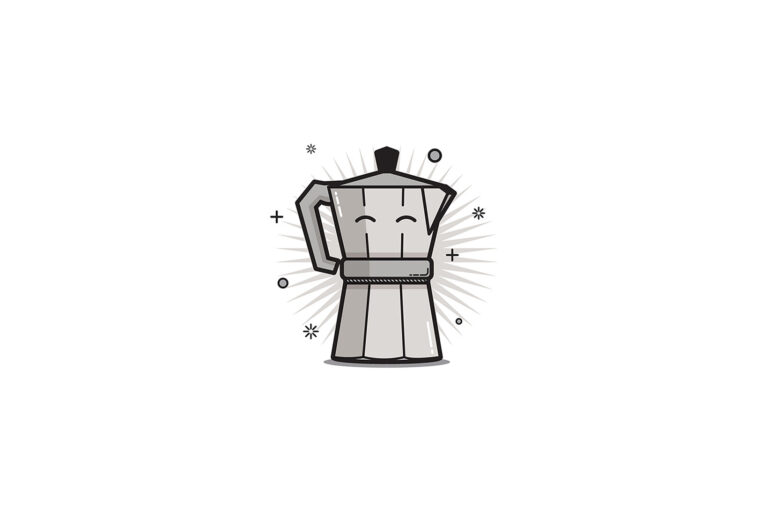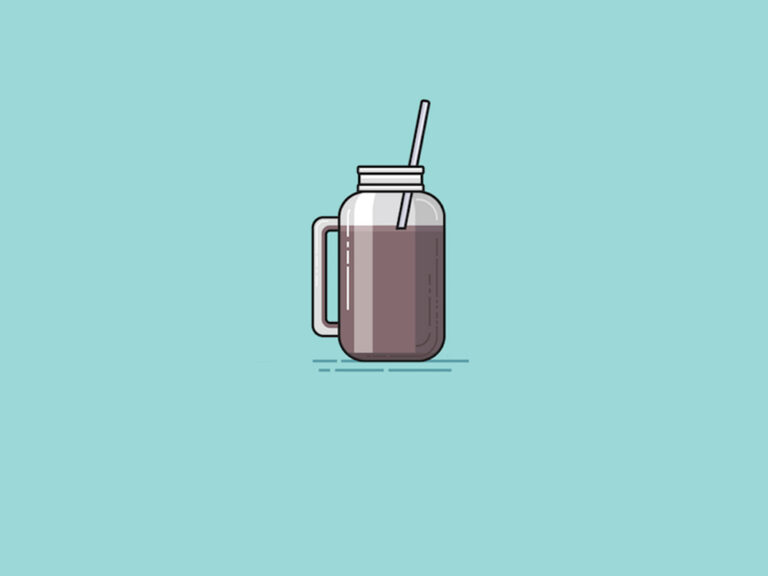
This post may contain affiliate links. As an Amazon Associate and a partner of other brands, I get a small commission if you purchase through my links, at no extra cost from you.
Knowing how long to steep cold brew can be hard to guess if you’re just starting your cold brew journey.
This article is a guide for beginners like yourself to steeping cold brew coffee and the different variations of brewing methods there are.
I will get into the WHY you should steep and HOW long to steep cold brew.
I will also go through all of the tools you’ll need to make that happen – from your vessel, grinder and scale… all the way up to how often you should be tasting and when it’s ready!
Without any further ado, let’s get started.
What Is Steeping?
Steeping coffee is a process of extracting the precious oil from coffee. Without this precious oil, your coffee is flat and tastes like beans (sorry to all you haters).
To get the most out of your coffee, you need to learn how to steep it correctly.
This means that to get the perfect cup of java, you need to know when you should steep and how long to steep cold brew.
You might notice that I didn’t mention anything about hot water in this section.
That’s because you can’t steep in hot water, just not in a way that actually extracts enough flavor out of it.
It’s like trying to get the most out of a steak if you cook it in boiling water. The oil is too volatile, especially when it’s boiled, to get the most out of the oils in your coffee beans.
Therefore, the only way to extract the most flavor from your coffee is with cold water.
With cold water, you don’t have to worry about the temperature of your coffee swirling around in your pot or stovetop.
You can take out or leave out more water for a stronger brew. It’s also ideal if you want an even more subtle sweetness without having to add honey or sugar.
For cold brewing, you want to steep your coffee and water at the same time.
Steeping your coffee and water together means that you end up with a more concentrated brew that’s ready after a shorter period of time.
This is because the coffee is already rich with flavor, but it needs extra time to sweeten itself up. The longer you steep your coffee, the stronger the brew will be.
Factors to Consider When Cold Brewing
How long to steep cold brew you ask? We’re getting there!
But first, it’s important to talk about the main variables that will affect how long your cold brew needs to sit. These variables include:
1. Water Temperature
The water temperature will directly affect how long to steep cold brew. Hotter water will increase the evaporation rate and accelerate the brewing process, so keep water cool for a slow and gentle extraction.
2. Coffee-to-Water Ratio
The ratio of coffee to water also affects how long you’ll need to steep cold brew.
The more coffee you put in your brewing vessel, the longer it will take for your cold brew to reach flavor equilibrium.
3. Grinding
Grind the beans coarse if you want a strong and flavorful cold brew that can stand up to some time steeping.
But if you want a more delicate and smooth extraction, grind finer and ensure everything is evenly ground.
3. Brewing Method
The steeping methods I’ll discuss below can also affect how long to steep cold brew.
In general, the immersion method takes the least amount of time to steep, while the cold drip method takes the most.
Using these variables as a guide, you should have a good idea of how long your cold brew will need to steep before it’s ready to serve.
Let’s get into each variation of steeping and how long it takes.
How Long to Steep Cold Brew
From experience, I can say that 16-24 hours is the ideal time for a flavorful cold brew.
There are 2 primary methods of immersion brewing, but the most common is to use an airpot or teapot.
These vessels can be used to notice the perfect amount of water infusion and provide you with some extra control over your brewing time.
I recommend using a large airpot, usually 12+ ounces, to steep your cold brew.
The size of this vessel will help maintain the temperature of the water, allowing you to use warm or cool water for slower or faster extraction.
Here’s how long it takes to steep with immersion brewing:
The length of time you steep your brew will often depend on what type of coffee you’re making.
If you have a medium-bodied roast, your brew should start to take on those flavors as soon as half an hour after steeping.
But if you’ve got a dark roast, then it’s best to steep it for up to four hours.
If you’re planning on making iced coffee, then it’s best to steep overnight and allow the cold brew time to cool for at least three hours before serving.
If it’s going into the fridge, then plan on letting it chill for 6-12 hours.
How To Steep The Right Way
Now that you know how long to steep cold brew, here are some helpful tips on how to get the best result.
1. Use Cold Water
The best way to get the most flavor out of your cold brew is to use cold water.
Warm water will bring out the sweetness in your drink, which you don’t always want when making cold coffee or tea.
If you don’t have access to cold water, then you’ll need to either boil the water or pour it hot over ice.
Whatever your case may be, just know that using warm water instead of cold could alter the taste of your coffee’s flavor.
2. Use a Large Vessel
If you’re going to use an immersion vessel, then I’d recommend using a large one – usually around 12 ounces.
This vessel will allow you to slowly and evenly infuse coffee into your water without letting too much flavor escape.
Believe me, you don’t want a strong cold brew that tastes bitter or burnt.
For consistency, I also think it’s smart to use the same vessel each time you make cold brew.
Over time, the flavor and aroma of your cold brew will really start to change and pair with your brewing vessel.
This is a good way to ensure you always serve the freshest and most robust drink possible.
3. The Finer the Grind, the Farther It Infuses
The finer your coffee is ground, the longer it will take to steep. If you’re making cold brew for iced coffee or a more delicate-tasting drink, it’s best to grind your beans extra fine.
For bolder flavors or darker roasts, consider grinding slightly coarser.
Keep in mind that even grinding doesn’t guarantee an even extraction, so pay close attention to how long to steep your cold brew.
As always with cold brew, experiment!
The best way to learn about what makes your favorite brewing method tick is to try out different variations.
The more you practice, the better you’ll brew the next time around.
Why Steep Cold Brew Coffee?
You might ask yourself, “Why should I steep cold brew coffee?”
Steeping your cold brew actually has some huge advantages over just pouring it right out of the brewer.
One of the most notable reasons is that by steeping, you’ll extract out more of the delicate aromas and subtle flavors of your coffee.
Cold brews are concentrated, so they already pack a big flavor punch. Leaving them to sit even longer after brewing can help you get more of that delicious flavor.
Cold brews also tend to be much smoother and more drinkable than drip-brewed coffee because we’re adding cold water and ice to the mix.
Ultimately, it reduces acidity and bitter notes.
Cold Brew Steeping Tips
Want to make better cold brew? Here are some helpful tips!
The longer you steep your cold brew, the stronger it will get. However, you can get milder flavors by steeping for shorter periods of time.
Old-fashioned brewing methods like putting over ice work great at preserving the delicate aromatics by letting it steep overnight.
On the other hand, using hot water extraction is best for extracting strong flavors because it’s done much faster.
If you want my advice, use cooler water when steeping darker roasts because their flavor is more delicate.
Once your cold brew has steeped long enough, you might want to chill it in the fridge. This will let all the flavors combine and develop.
If you’re steeping coffee for later consumption, cold brewing at colder temperatures is a way to add even more flavor.
If you’re steeping for iced tea or lemonade, then your drink will have a frothy consistency that is sometimes used in that drink category.
If you’re grinding beans on the finer side, it’s best to let this chilled espresso-like concentrate steep a while longer so it can meld with all of its flavors and smooth out some of the harsher notes.
For stronger coffee, use hot water.
If you’re using a smaller batch or are making coffee for later consumption, hot water will allow you to use less brew at a time, which lets you enjoy stronger flavors.
It’s also especially useful if you have leftovers to store in the fridge because the heat will keep it at the proper serving temperature for longer.
Using ethically sourced beans can help support growers and improve their lives. Fair-trade coffee can keep families fed and clothed, which is a real benefit to the environment.
Fair-trade coffee is also encouraging small communities to continue growing coffee, which will help preserve these cultures.
Bonus Tip About Steeping For Cold Brew
If you’re not using a dripper, then you’ll want to consider grinding your beans finer for a slower infusion or use a french press instead of immersion.
To make cold brew concentrate, simply press the grounds with the flat bottom of a mason jar and add more fresh water to completely submerge them.
This is not an exact science though, so always check temperatures with different temperature gauges to get the most accurate info.
I recommend starting with cold water and adding ice to the mixture if it’s too hot. The warmer temperatures will speed up the extraction process and release even more flavor.
Remember, coffee beans are a natural product and will vary in taste, roast level, and even size. Your brew will vary slightly from batch to batch based on these factors.
That’s why it’s best to use an immersion or french press to get the most even extraction because of the big differences between drip grinds and a larger grind for a coffee dripper.
Final Thoughts on How Long To Steep Cold Brew
Since cold brew is less acidic than your traditional hot coffee, it doesn’t over-extract and makes the batch taste bitter.
However, it does take a much longer time to extract properly than traditional iced coffee.
What you want is a 16-24 hour steep for the best flavor.






